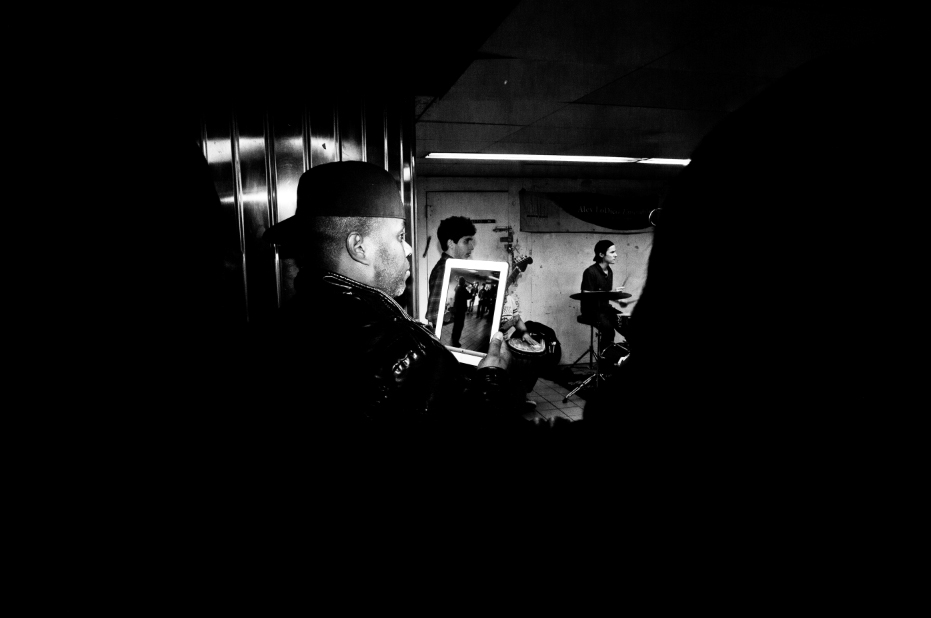
My goal is to show the Underground Music scene in a different light. To expose the subway stations and platforms as the stages they are. I was hearing music underground as rich and exciting as in any New York hot spot. The public, however, mostly breezed by, noticing people asking for money rather than hearing the music they were playing, unable to see or hear the artistry because of the environment and situation in which they found it. To me, it is precisely that which makes it so amazing. The energy, the architecture, the heat and coldness, the acoustics and the people that choose and love to play underground makes for an incredibly rich and unpredictable experience, isn’t that what underground music is all about?
So I set out to photograph the musicians of the Underground, to show them as the musicians they are, and the subway as the great stage that it is.
-Marlon
Underground music means different things to different people around the world; some would even argue that with the proliferation of the internet, streaming music and podcasts that underground no longer exits since music goes straight from the innovator to the mainstream. Yet others argue that underground music has never been as vibrant and is just as underground as it ever was.
In New York, underground music has another meaning that veers from the traditional concepts. It encompasses the musicians and performers working literally underground in the deep recesses of the New York Subway system. From the bustling and coveted real-estate of Grand Central or Union Square to the lonely corners of New Lots of Ave or Nereid stops.
People join the ranks of Underground musicians for various reasons, some are trying to earn extra money, some use if for promotion and others just use it as a place to practice in anonymity and enjoy the great acoustics many stations offer. Their skill levels are equally as manifold, ranging from solo acts squeaking out notes on worn instruments to full ensembles with performance dates and records under their belts.
Getting a good corner can be tough these days and navigating the diplomatic nuances of sharing a spot with another artists can take patience. Although the subway falls under a public space and is therefore protected by the First Amendment making performing legal without amplified sound the MTA itself is involved in dolling out permits for authorized subway performances. They hold auditions once a year at Grand Central, about 80 show up and 20 will get a spot. Although it seems even with this permit musicians aren’t exempt from the occasionally being hassled by the police.
In 1985 the MTA Arts for transit’s visual and performing arts program initiated Music under New York (MUNY). Today over 350 soloists and group participate in the MUNY program, providing over 7,500 performances at approximately 25 locations throughout the transit system every year. But that’s only the half of it. That does not include the dozen’s maybe 100’s of individuals who aren’t up to the MTA’s standards or just aren’t interested in performing under their banner.
ABC News says "Krieger found inspiration for his latest project much closer to home: aiming his lens at the gritty, subterranean music scene inside New York City subways. The film and the photography serve as a kind of guided tour through...Snaking through gritty subway platforms..manages to introduce a spirited cast of characters..whose fearless adventures reveal a world that millions of us pass through every day yet barely understand or even acknowledge."































